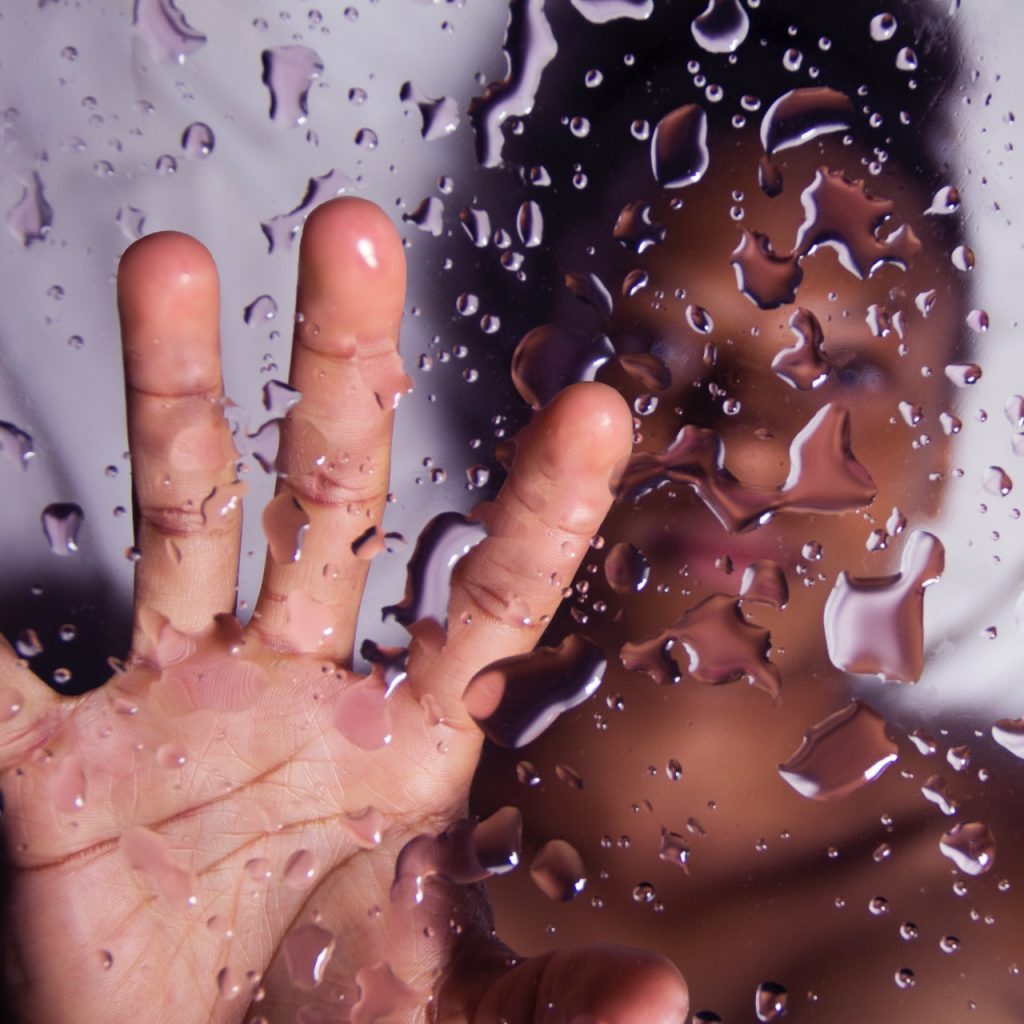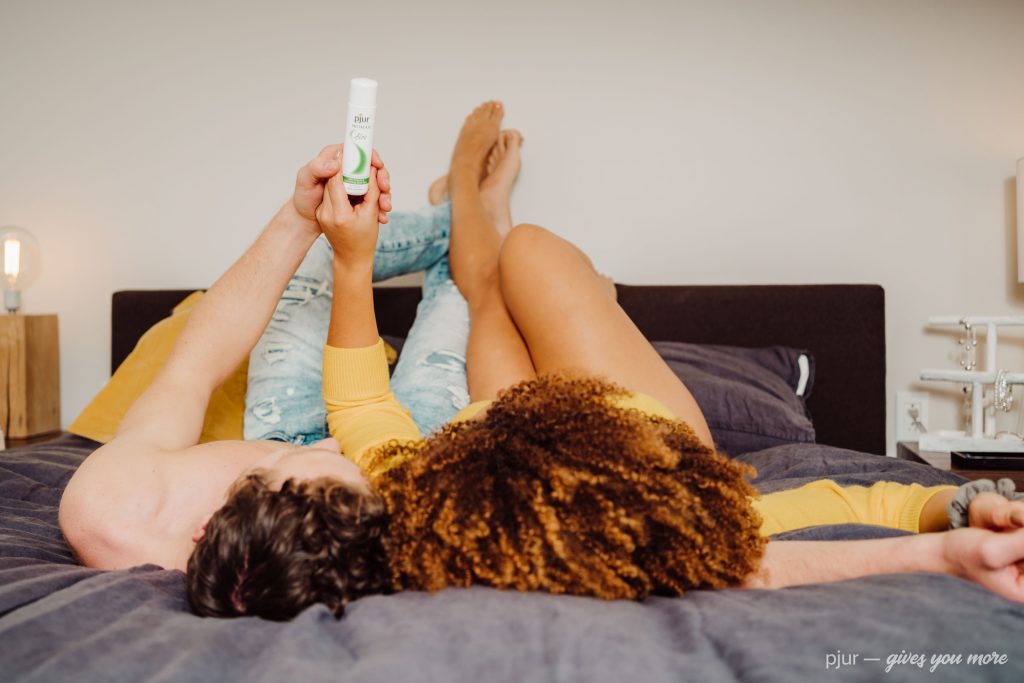
Generally speaking, it’s going to be a bit wet today! Today’s weather forecast? Close, because that’s more or less what the forecast says in our beds as well. A hot and humid affair, don’t you think? Good vaginal lubrication – being ‘wet’ – seems like such a positive, healthy thing. But why exactly do we talk about ‘being wet’ or ‘getting wet’? It’s always a bad idea to put labels on the human body, isn’t it? After all, we don’t tend to label our partners based on whether they produce too much or too little saliva, do we? So let’s take a closer look at ‘getting wet’. In part one of this series, we explore what lubrication means, what it consists of and what can influence it.
What is lubrication and how does it actually work?
Lubrication (from the Latin Lubricare, meaning ‘to make slippery’) is a technical term for the natural process by which the vulva and vagina are kept moist, in other words, the secretion of fluid from two sets of glands, the Skene glands and the Bartholin glands. The Skene glands are located close to the urethra and are also referred to as the prostata feminina or female prostate. The Bartholin glands are located on either side of the vaginal opening and are only activated during sexual arousal. Lubrication from the Skene glands is primarily responsible for keeping the intimate mucosa hydrated and moist on a daily basis, because it needs specific conditions to be able to actively fight pathogens and thus ensure healthy vaginal flora. The lubrication that moistens the vulva during sexual arousal, on the other hand, is produced solely by the Bartholin glands. These glands lubricate the entrance to the vagina to make it easier to penetrate with a penis, sex toy, finger – or whatever you (or they) prefer to use.
So let’s recap:
‘Being wet’ and ‘getting wet’ are not the same thing. There’s a difference between normal ‘everyday wetness’ and the lubrication that occurs when we are aroused, and that difference is the precise location where the fluid is secreted. So anything resembling a weather forecast just doesn’t make much sense in the bedroom 😉
What is the ‘wetness’ – the vulval secretions – made of?
These secretions in the vulva can contain up to 50 substances in total. They are mostly water, lactic acid, cholesterol, various fatty acids (including glycerol and urea) and complex alcohols, ketones and aldehydes. Vulval secretions are usually transparent and range from a thin liquid to a more viscous consistency, although diet, hormonal changes and sexual arousal can have a major influence on its colour, consistency, odour – and even taste.
Did you know that taste can vary hugely according to what foods you like to eat? Industrial salts and animal proteins have a big influence.
Sexual arousal and lubrication
The amount of vaginal ‘moisture’, i.e. lubrication, and its composition varies from one person to the next and can change over the course of a person’s life. As we have already seen, sexual arousal – which doesn’t necessarily have to involve direct contact – activates the secretion of fluid from the Bartholin glands. This secretion of fluid inside the labia is what makes foreplay involving the vulva and clitoris pleasurable in the first place.
Did you know that as soon as the lubrication reaches the outside and eventually also wets the clitoris, this results in a kind of positive feedback, confirming your arousal? This in turn stimulates the secretion of more fluid from the glands, making you even wetter – which is essential for any kind of penetration.
Virtually everyone has experienced vaginal dryness!
At least, that’s the theory 😊 As we’ve seen, the whole business of lubrication and arousal is much more complex and certainly can’t be dismissed as simply ‘getting wet’. A lot of people find that they don’t have any lubrication in their vulvas, even when they are aroused, and that’s totally OK! It doesn’t make you any less worthy or any less of a sexual being who deserves to be satisfied sexually. That’s something we should always bear in mind. And yes, ‘thank pjur’ there is a personal lubricant out there for every situation, no matter what you’re looking for. We recommend reaching for it whenever you don’t have enough natural lubrication – whether that’s a general thing or just for a specific situation.
Side fact: Of course, the phenomenon of positive feedback also exists even in the absence of arousal, and more fluid is secreted without any arousal.
Whatever your situation, vaginal dryness is nothing to panic about. Period.

What can influence female lubrication?
‘The wetter a person is, the hornier they are (and vice versa).’ Let’s get this straight: that’s just not true! There are countless factors that influence lubrication. After all, vaginal lubrication is simply part of our normal bodily functions, and it responds very strongly to both internal and external influences.
Most of the time, changes in lubrication can be attributed to one of the following factors:
- Hormone therapy with anti-oestrogens
- Problems with the immune system
- Menopause
- Pregnancy / breastfeeding
- Stress
- Illness
- Medication
- Surgery
- Diet
- Excessive intimate hygiene
- Improper tampon use
Of course, you cannot overlook your choice of partner either. Sometimes our subconscious is just a little “quicker” than our conscious mind. If something isn’t quite right in your relationship or at that particular moment, it shows in your lubrication. Maybe we don’t always give much attention to the erogenous zones, or sometimes certain hand motions simply don’t get us turned on. If that’s the case, listen to your body – not only is it okay, but it’s absolutely vital. Remember, we are not a weather report. We are sexual creatures. And if you’re lucky enough to have found The One, then your partner will understand and want to talk to you about it 😊

So we’ve seen that there are pitfalls associated with labelling lubrication as ‘getting wet’. And we have seen what lubrication actually means, what lubrication consists of and what influences it. Read part two of this series to find out how to break free from the label of ‘getting wet’, what science still doesn’t know and how you can put your personal lubricant to even better use.
#normalizelube
Editor’s note: The content of this blog always includes same-sex relationships, even if the examples given are of heterosexual relationships.

